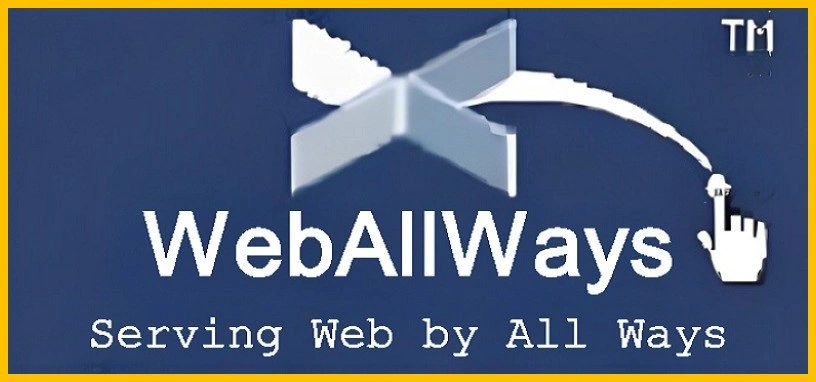
In today’s digital environment, Social Media Optimization (SMO) is an indispensable tool for businesses striving to maximize their social media presence and achieve their marketing objectives. At WebAllWays, we understand that an effective SMO strategy can significantly impact your brand’s success. This comprehensive guide delves into the intricacies of SMO, covering its fundamentals, benefits, and advanced techniques to help you harness its full potential.
Introduction to SMO: Defining Social Media Optimization
What is Social Media Optimization (SMO)?
Social Media Optimization (SMO) encompasses the practices and techniques used to enhance a brand’s presence and performance on social media platforms. The primary goal of SMO is to increase the effectiveness of social media activities, including profile optimization, content creation, and audience engagement, to drive traffic and foster brand loyalty.
The Purpose and Scope of SMO
The core objectives of SMO include:
- Increasing Brand Visibility: Boosting the prominence of your brand on social media platforms.
- Enhancing User Engagement: Encouraging interactions such as likes, shares, and comments to build a loyal audience.
- Driving Website Traffic: Directing users from social media platforms to your website to increase web traffic and potential conversions.
- Fostering Community Building: Creating and nurturing a community of engaged followers and brand advocates.
The Significance of Social Media Optimization in Digital Marketing
Why Social Media Optimization is Crucial for Modern Businesses
In the contemporary digital landscape, social media plays a pivotal role in business success. Here’s why SMO is essential:
- Vast Audience Reach: Social media platforms have billions of active users globally, providing businesses with a vast audience base.
- Real-Time Interaction: Enables immediate communication with users, facilitating real-time engagement and feedback.
- Cost-Effective Promotion: Compared to traditional marketing methods, SMO offers a more affordable way to reach and engage with your target audience.
How SMO Enhances SEO Efforts
SMO and SEO work synergistically to improve your online visibility. While SEO focuses on search engine rankings, SMO can:
- Influence Search Engine Rankings: Social signals like shares and likes can impact search engine algorithms, improving your website’s ranking.
- Generate Quality Backlinks: Engaging content shared on social media can help link building that will ultimately boost SEO.
Core Elements of an Effective SMO Strategy
1. Profile Optimization: Building a Strong Social Media Presence
Consistent Branding Across Platforms
- Uniform Visual Identity: Ensure consistency in your logo, color scheme, and imagery across all social media profiles to reinforce brand recognition.
- Cohesive Messaging: Maintain a consistent tone and messaging that aligns with your overall brand strategy.
Complete and Engaging Profile Information
- Detailed Descriptions: Fill out all relevant profile information, including business name, description, and contact details.
- Compelling Bio: Craft a bio that clearly articulates your brand’s value proposition and appeals to your target audience.
2. Developing a Strategic Content Plan
Content Creation: Crafting High-Quality, Relevant Content
- Diverse Content Formats: Utilize various content types such as blog posts, videos, images, and infographics to cater to different audience preferences.
- Value-Driven Content: Produce content that addresses your audience’s needs, solves problems, and provides valuable insights.
Content Curation: Sharing Valuable Third-Party Content
- Industry News and Updates: Share relevant news and updates from reputable sources to keep your audience informed and engaged.
- Thought Leadership: Curate content that positions your brand as a leader in your industry by sharing insightful and thought-provoking information.
Content Calendar: Scheduling and Planning Posts
- Strategic Scheduling: Develop a content calendar to plan and schedule posts for optimal times to maximize reach and engagement.
- Consistency in Posting: Maintain a regular posting schedule to keep your audience engaged and informed.
3. Enhancing Audience Engagement
Interactive Content: Driving User Participation
- Engaging Activities: Create interactive posts such as polls, quizzes, and surveys to drive user engagement and gather valuable feedback.
- Contests and Giveaways: Host contests and giveaways to boost engagement and attract new followers.
Responding to Feedback: Managing Customer Interactions
- Prompt Responses: Monitor and respond to comments, messages, and mentions in a timely manner to foster positive interactions.
- Handling Negative Feedback: Address negative comments professionally and constructively to mitigate potential issues and maintain a positive brand image.
Community Building: Creating and Nurturing Brand Communities
- Joining Relevant Groups: Participate in or create groups and communities related to your industry to engage with a targeted audience.
- Networking and Collaboration: Build relationships with influencers, industry leaders, and other businesses to expand your reach and influence.
4. Analyzing and Monitoring Performance
Key Metrics: Measuring Social Media Success
- Engagement Metrics: Track metrics such as likes, comments, shares, and follows to evaluate the effectiveness of your social media efforts.
- Traffic Metrics: Monitor click-through rates (CTR) and referral traffic to assess how well your social media activities drive users to your website.
- Follower Growth: Measure the growth of your follower base to gauge the impact of your SMO strategies.
Tools and Platforms: Leveraging Analytics for Insight
- Built-In Analytics: Utilize analytics tools provided by social media platforms like Facebook Insights, Twitter Analytics, and Instagram Insights.
- Third-Party Analytics Tools: Employ tools such as Google Analytics, Hootsuite, and Sprout Social for a comprehensive view of your social media performance.
Adjusting Strategies: Using Data to Refine SMO
- Data-Driven Decisions: Use performance data to identify successful tactics and areas for improvement.
- Strategy Optimization: Continuously refine your SMO strategies based on insights gained to enhance effectiveness and achieve better results.
Advanced SMO Techniques for Maximizing Impact
1. Social Media Advertising: Expanding Reach with Paid Promotion
Targeted Advertising: Reaching Specific Audiences
- Demographic Targeting: Leverage demographic information such as age, gender, and location to target specific audience segments.
- Interest-Based Targeting: Utilize interest and behavior data to target users with relevant preferences and behaviors.
A/B Testing: Optimizing Ad Performance
- Testing Variations: Experiment with different ad creatives, headlines, and calls to action to determine what resonates best with your audience.
- Performance Evaluation: Analyze A/B test results to optimize your ad campaigns for better performance and higher ROI.
Budget Management: Ensuring Effective Ad Spend
- Budget Allocation: Set and manage your advertising budget based on campaign goals and anticipated outcomes.
- Monitoring and Adjusting: Track ad spend and performance to ensure cost-effectiveness and make adjustments as needed.
2. Influencer Collaboration: Leveraging Influencer Reach for Brand Growth
Identifying and Partnering with Influencers
- Relevant Influencers: Identify influencers whose audience aligns with your target market and whose content is relevant to your brand.
- Collaboration Models: Develop partnerships with influencers that outline deliverables, compensation, and campaign objectives.
Measuring Influencer Impact: Assessing Campaign Effectiveness
- Performance Metrics: Track metrics such as engagement, reach, and conversions resulting from influencer collaborations.
- ROI Analysis: Evaluate the return on investment from influencer campaigns to determine their effectiveness and value.
3. Social Listening: Gaining Valuable Insights from Social Media Conversations
Tracking Keywords and Mentions: Monitoring Brand and Industry Conversations
- Keyword Tracking: Use social listening tools to monitor keywords related to your brand, industry, and competitors.
- Mentions Analysis: Track mentions of your brand across social media platforms to gauge public perception and identify emerging trends.
Analyzing Sentiment: Understanding Audience Perception
- Sentiment Evaluation: Assess the sentiment of social media conversations to understand how users feel about your brand and adjust your strategies accordingly.
- Trend Monitoring: Stay informed about industry trends and conversations to keep your content relevant and engaging.
Responding to Trends: Engaging with Relevant Topics
- Timely Engagement: Participate in trending conversations and topics to enhance your brand’s visibility and relevance.
- Content Adaptation: Adapt your content strategy to address trending topics and audience interests effectively.
If you want to improve your local business visibility in search results, you can also learn how to use Facebook for Local SEO here.
Overcoming Common Challenges in SMO
Navigating Algorithm Changes: Adapting to Social Media Platform Updates
- Staying Updated: Keep abreast of changes in social media algorithms and adjust your strategies to align with new platform features.
- Flexible Strategies: Be prepared to modify your SMO approach in response to algorithm updates and evolving platform guidelines.
Dealing with Content Saturation: Standing Out in a Competitive Space
- Creative Content: Develop unique and innovative content to differentiate your brand from competitors and capture audience attention.
- Effective Strategies: Implement creative strategies and formats to maintain audience interest and engagement.
Managing Negative Feedback: Protecting Your Brand’s Reputation
- Proactive Management: Address negative feedback promptly and professionally to prevent escalation and maintain a positive brand image.
- Customer Service Excellence: Provide exceptional customer service through social media to resolve issues and enhance customer satisfaction.
Best Practices for Successful SMO
Staying Updated: Keeping Abreast of Social Media Trends and Best Practices
- Continuous Learning: Stay informed about the latest trends, tools, and best practices in social media marketing.
- Industry Research: Regularly review industry reports, case studies, and expert insights to stay ahead of the curve.
Maintaining Consistency: Ensuring a Unified Brand Voice Across Platforms
- Coherent Communication: Ensure that your brand’s voice and messaging are consistent across all social media platforms to build a cohesive brand identity.
- Regular Posting Schedule: Adhere to a regular posting schedule to keep your audience engaged and informed.
Engaging Authentically: Building Genuine Relationships with Your Audience
- Meaningful Interaction: Foster authentic connections with your audience through personalized and empathetic communication.
- Tailored Content: Customize your content to meet the specific interests and needs of your audience, enhancing engagement and loyalty.
Conclusion: Leveraging SMO for Business Success
Social Media Optimization (SMO) is a powerful strategy for enhancing your brand’s online presence, engaging with your audience, and achieving your business goals. By understanding the fundamentals of SMO and implementing effective techniques, businesses can harness the full potential of social media to drive growth and success. At WebAllWays, we are dedicated to helping you navigate the complexities of SMO and develop strategies that deliver results.
Ready to elevate your social media strategy? Contact WebAllWays for expert SMO services and let us help you create a tailored strategy that drives engagement and growth.
